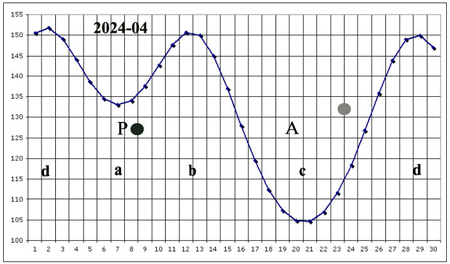Relying on chance.
At present, sowing takes place regardless of the cycle in question. In so doing, we rely on chance, as to the balance of germination capacity, between what is lost and what is recovered.
Keeping mind the timing of the cumulative-dissipative cycle.
Instead, by conforming to the times of this cycle and to what is required by it, the germination capacity of the seeds can be increased, and yields as well.
In order to increase the germinative power of the seeds, it is necessary not to keep them at low temperature, during the cumulative period preceding the dissipative one, chosen for the sowing.
Seeds in storage, and activation of the cycle.
If the seeds are to be kept in store for a long time, the most convenient management of their viability is to keep them in a cold and dry environment.
When the seeds are stored in a cold and dry environment, there is the advantage that the seeds' ability to germinate decreases slowly, but the disadvantage that the cumulative-dissipative cycle is rendered inoperative, with no cyclic recovering of their ability to germinate.
Before sowing, the cumulative-dissipative cycle must be activated, in order to recover the lost germinability, and also to increase it.
The (public domain) procedure.
To this end, a procedure was set up to coordinate the sowing operations, in accordance with the cycle in question.
The procedure exploits the Moon's movement, and consists in not keeping the seeds at low temperature, during the cumulative period (b-c; d-a) preceding the dissipative one (a-b; c-d), previously chosen for sowing.

In open field cultivation of seeds such as wheat, maize, sunflower, sowing will be performed generally from 12-24 hours before the start of the dissipative phase, up to 24-36 hours before the start of the following cumulative period.
The advice is given even if I realize that, in open field agriculture, it is often difficult to put it into practice precisely, due to the weather, and to other constraints.
Not at a low temperature.
The temperature at which the seeds are kept, during the cumulative phase that precedes sowing, is important.
Of course within the temperature limits that the seeds can tolerate. See two examples on page 1.1.5 and on page 1.1.6.
When the seeds lose capacity to germinate, during the cumulative phase preceding the sowing, they resort to a mechanism, which generates, during the subsequent dissipative phase, a kind of self-organization, a reset, a recombination, with diminution of entropy, and a significant increase in their ability to germinate.
Efficiency amplifier.
In other words, the temperature level at which the seeds are kept during the cumulative phase constitutes an amplifier of the cycle efficiency.
However, without exagerating.
Good results can be obtained by holding the seeds in a cumulative phase at a temperature of 25 or 30 degrees centigrade, for two days, or at a temperature of 20 degrees for several days.
We can be more precise once we know with precision the critical angular velocities, still not well defined, at which processes can take place.
The test is easy.
The test is easy and not at all expensive. It is enough to respect the modalities of the procedure and the timing of the two phases of the cycle, and proceed to a normal sowing.
The procedure recommended here, for the recovery and increase in the seeds' germination capacity, then determines the rapid growth of the plants, the significant development of the root system, so useful in times of drought. It improves their resilience, and ultimately leads to an increase in the final productivity.
In the case of trees, I expect their longevity to be increased.